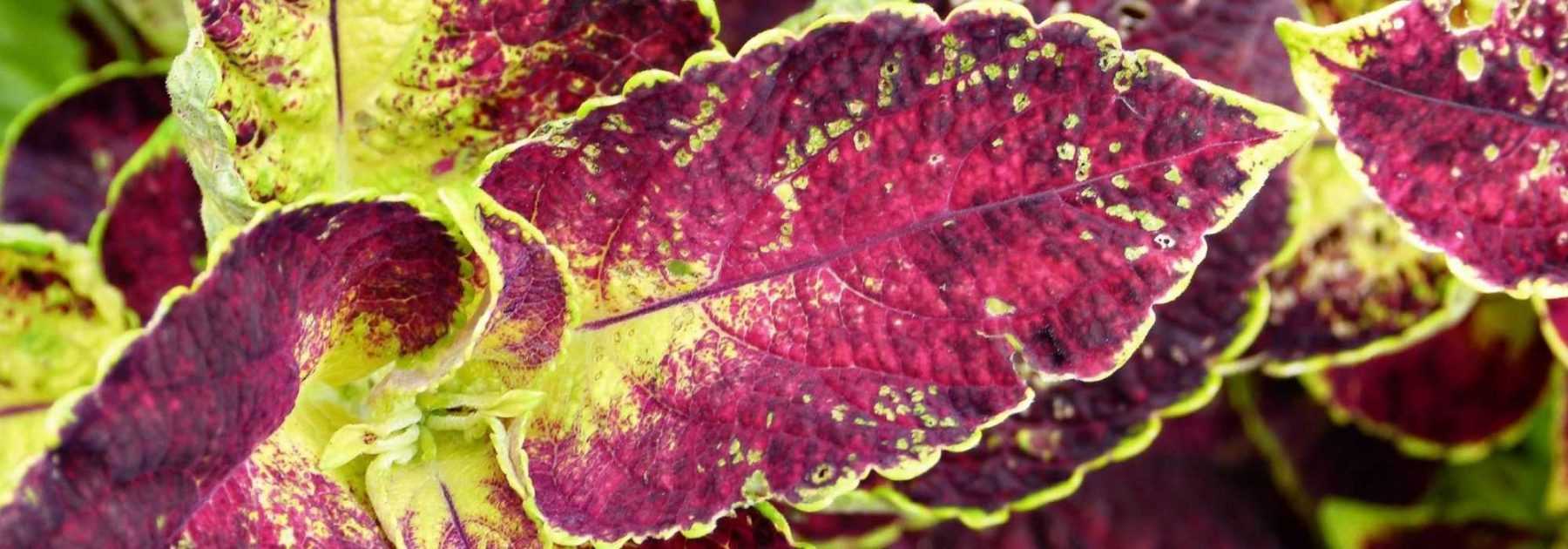
Coleus: Sowing, Planting and Care
Contents
The Coleus in a few words
- Coleus stands out with its slightly velvety foliage that is remarkably decorative
- It comes in a wide range of varieties and cultivars, offering an incredible palette of bold or subtle colours, either solid or variegated
- This is a tender perennial, grown as an annual in gardens or as a houseplant
- It’s very easy to grow, in light, rich and moist soil, in sun or partial shade
- It adds colourful and graphic touches to flowerbed borders, pots and planters
Our expert's word
The Coleus, sometimes called “Coliole” or “Gypsy Plant”, is one of the best annual plants with colourful foliage! Blue coleus, pink coleus or coleus with pink and green leaves (coleus ‘Kong’, ‘Rainbow’ or ‘Arc-en-ciel’), they will continue to surprise you from early summer until the first frosts.
Alongside coleus forskohlii or barbatus, widely used in Ayurvedic medicine for its medicinal properties, we mainly find in our nurseries Solenostemon scutellarioides (syn. Coleus blumei), a species that has given rise to numerous varieties offering an unlimited choice of colours: plain or variegated, bi-coloured or tri-coloured, ranging from lime green to yellow, through to rust or almost black purple.
Being frost-tender, Coleus can also be grown as a houseplant.
From coleus seed sowing to planting our coleus plug plants, you’ll learn all about this easy-to-grow annual.
Equally at home in pots or in the ground, indoors or out, discover coleus, this versatile annual plant capable of creating beautiful displays throughout the growing season, without the need for additional flowering!
Description and botany
Botanical data
- Latin name Coleus
- Family Lamiaceae
- Common name Coleus, Painted Nettle, Flame Nettle
- Flowering July to October
- Height 0.30 to 0.60 m
- Exposure Sun, partial shade
- Soil type light, rich, moist but well-drained
- Hardiness Tender
The Coleus or Painted Nettle is a perennial herbaceous plant native to the tropical forests of Africa, America and Southeast Asia, belonging to the Lamiaceae family, like nettles, sage and lavender.
Perennial in its native habitat, it is grown as an annual in our gardens or as a houseplant due to its low hardiness as it cannot tolerate temperatures below 5°C.
The genus Solenostemon, formerly Coleus, includes over 150 species, cultivars and hybrids with very varied forms and colours, offering an impressive choice!
The hybrid coleus or cultivars most often found in garden centres are mainly derived from the species Solenostemon scutellarioides (syn. Coleus blumei) and are characterised by particularly decorative foliage. They often come in series grouping varieties of different colours.
Fast-growing, the Coleus develops beautiful bushy clumps, upright, with a pyramidal and branched habit that will reach 30 to 50 cm in height and almost as much in width depending on the variety.
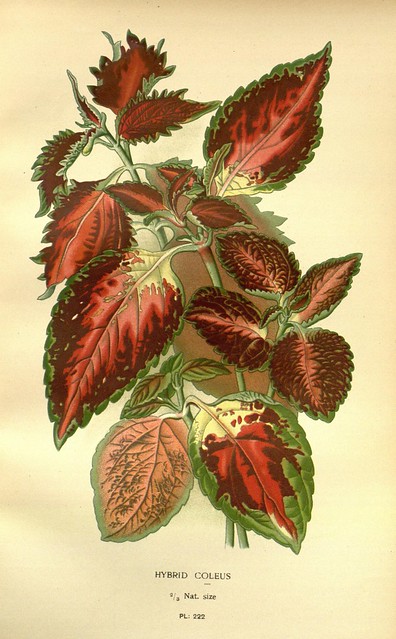
Coleus – botanical illustration
The Coleus is one of those remarkable plants for the sumptuous colours of its foliage. On quadrangular, fleshy and brittle stems unfold deciduous, opposite, ovate or heart-shaped leaves, slightly dentate or deeply cut. They are sometimes so veined and undulate that they appear embossed. Hairy on the underside and slightly velvety on the top, they measure from 2 to 15 cm long and resemble in appearance the leaves of nettles or mint. Depending on the variety, they take on a triangular, lobed, fringed or even ruffled shape.
The elegant foliage of the coleus never goes unnoticed. At times vibrant, baroque or more subtly coloured, the leaves display solid or variegated, bicolour or tricolour hues, sometimes surprising, eccentric to the point of garish or rare in the plant world. The palette of tones is infinite, ranging from absinthe green to acid yellow, from rust to deep purple-red almost black (Coleus Palisandra or “Painted Nettle”) through Indian pink or cream white.
With their large, soft-to-the-touch leaves, variegated, margined or splashed with lighter or darker shades combining several colours, some cultivars appear painted, sporting tones with often striking contrasts (Coleus ‘Wizard Mixed’, Coleus hybrid ‘Rainbow’).
The Coleus is appreciated for its foliage rather than its flowering. On this colourful vegetation, small bilabiate inflorescences gathered in small clusters appear from June to October at the tips of the stems. Pink, mauve, blue or white, they are of little interest and deserve to be sacrificed to maintain vigorous foliage.
The Coleus is a tender perennial plant that fears frost, rarely tolerating temperatures below 5°C, which is why it is grown as an annual to be resown or replanted each year in spring in the garden, in planters or pots. The Coleus is also an excellent houseplant that can be kept indoors all year round.
Very easy to grow, it appreciates a sunny but not scorching exposure or partial shade to preserve its vibrant colours and a rich, light, deep, moist but well-drained soil.
The Coleus is a valuable annual for bringing contrast, colour and brightness to all natural or wild gardens, unpretentiously, to create colourful scenes. Plant it along borders, along a path, in flower beds and borders, in not-too-dry rock gardens or in pots and planters.
The colour disparities in the leaves of some coleus are due to a lack of chlorophyll between the different zones.
The coleus canina, nicknamed “scaredy cat plant” belongs to a different genus (Plectranthus) and should not be confused with our ornamental coleus: its unpleasant-smelling foliage acts as a repellent against dogs and cats.
Main species and varieties
Coleus, primarily derived from the species Solenostemon scutellarioides (syn. Coleus blumei), come in various series available as seeds, such as the Wizard® series featuring hybrids in different colours, or as cultivars offered as plug plants like the Coleus ‘Black Prince’.
Most Popular
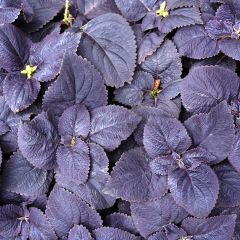
Coleus blumei Palisandra Seeds - Solenostemon scutellaroides
- Height at maturity 60 cm
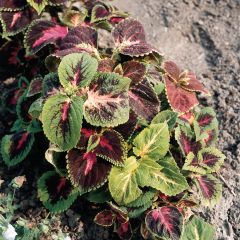
Coleus Rainbow Mix Seeds
- Flowering time July to November
- Height at maturity 50 cm
Our Favourites
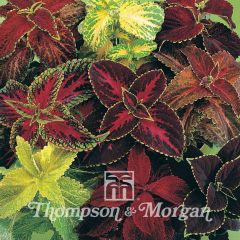
Solenostemon Wizard Mixed
- Height at maturity 50 cm

Coleus Black Prince
- Flowering time June to November
- Height at maturity 80 cm
Discover other Coleus seeds
View all →Available in 1 sizes
Available in 1 sizes
Available in 1 sizes
Available in 1 sizes
Available in 1 sizes
Available in 1 sizes
Available in 1 sizes
Available in 1 sizes
When and how to sow coleus seeds?
Sow coleus seeds from January to March under cover at a temperature of 20 to 25°C.
Here’s how to proceed:
- On the surface of good potting soil enriched with well-decomposed compost, sow your coleus seeds by broadcasting
- Do not cover the seeds, they need light to germinate
- Water with a fine spray and keep moist until germination: emergence will take 10 to 20 days
- Still in warmth, transplant the young plants into individual buckets as soon as they are sturdy enough to handle
- When the plants reach about 15 cm, pinch the tip to encourage them to become ramified
- Gradually acclimatise your plants to the outdoors but only plant them outside in late May or early June when temperatures have warmed
Discover our tips for successful sowing of annual seeds!
Planting Coleus
Where to plant coleus?
Not frost-hardy, Coleus cannot tolerate temperatures below -5°C. It will perish at the first frost! It should therefore be grown as an annual in open ground in the garden or in pots on the terrace or balcony. Bring your potted plants indoors at the first frost in a slightly heated conservatory to preserve them. It can also be grown as a houseplant to be kept all year round in a bright room out of direct sunlight, in which case it will behave as a perennial and can be kept for several years.
Coleus prefers well-drained but moist soils in summer, rich and fertile, even slightly acidic. It enjoys sunny positions where its colours will be enhanced, but will prefer partial shade to scorching sun, which will preserve its leaf colouring, especially in the south of France.
Versatile, it is essential for dressing shady areas, flowering a path border, the foreground of a flower bed, a not-too-dry rockery, for edging a summer flower bed with elegance and colour. It creates eye-catching or more discreet colourful clumps in all naturalistic gardens or romantic gardens. Coleus is also the ideal annual plant for pots and planters and a good conservatory plant.
When to plant coleus?
Coleus is planted in spring from March to June depending on the region, in any case after the last frosts when temperatures become milder.
How to plant coleus?
In open ground
Plant out in May-June, when the soil has warmed up, spacing coleus plug plants 25 to 30 cm apart and allow for 4 to 5 young plants per m2 for a beautiful shimmering mass effect.
- Dig a hole 2 to 3 times larger than the size of the plug plant
- Add gravel or clay pebbles to the bottom of the hole
- Add a good spadeful of compost to each planting hole
- Place the plug plant in the centre of the hole, planting without burying the collar
- Backfill and firm down
- Water
Take advantage of our advice for successfully planting annual flowers as plug plants
In pots
Plant only one coleus per 15 cm diameter pot. In mixed planters, space young plants 15 to 20 cm apart. All the tips you need to know for planting containers and hanging baskets with annual plug plants are on our blog!
- Line the bottom of the container with gravel or clay pebbles
- Plant the plug in a mixture of soil and leaf mould, with added compost
- Fill in and firm down
- Water
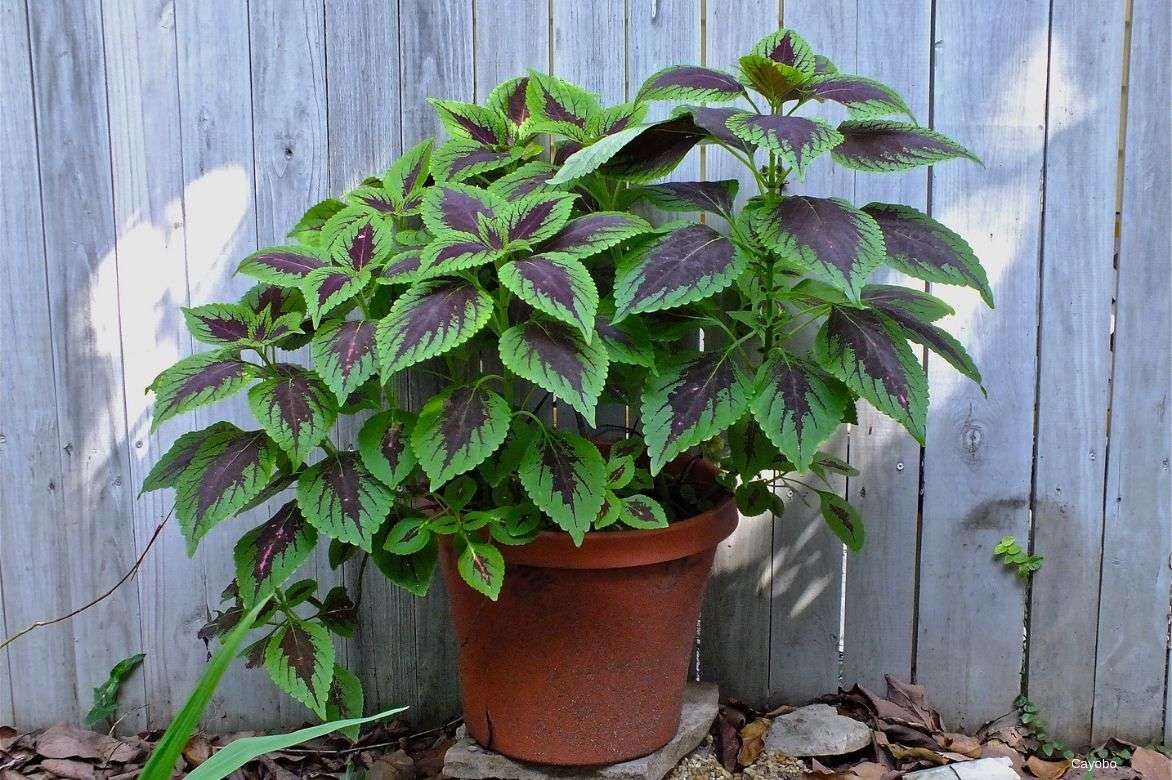
Caring for and Maintaining Coleus
The Coleus is one of those easy and low-maintenance annuals provided the soil remains moist and well-drained in summer.
Whether in pots or in the ground throughout the growing season, Coleus requires regular watering: water without waterlogging the soil, ensuring it never dries out completely.
For potted coleus, add liquid fertiliser for flowering plants to the water every fortnight: avoid leaving standing water in saucers.
Pinch back young plants regularly (remove shoot tips with thumb and forefinger) to encourage branching and maintain compact, bushy growth.
Remove flowers and flower buds as soon as they appear to prevent premature exhaustion of the plant and maintain lush, colourful foliage.
In late autumn, lift outdoor coleus plants and move potted specimens to a frost-free room or conservatory (10°C) to bring them out again the following spring. During winter, keep in good light and reduce watering: allow the compost to dry out between waterings. Repot your coleus every year in early spring.
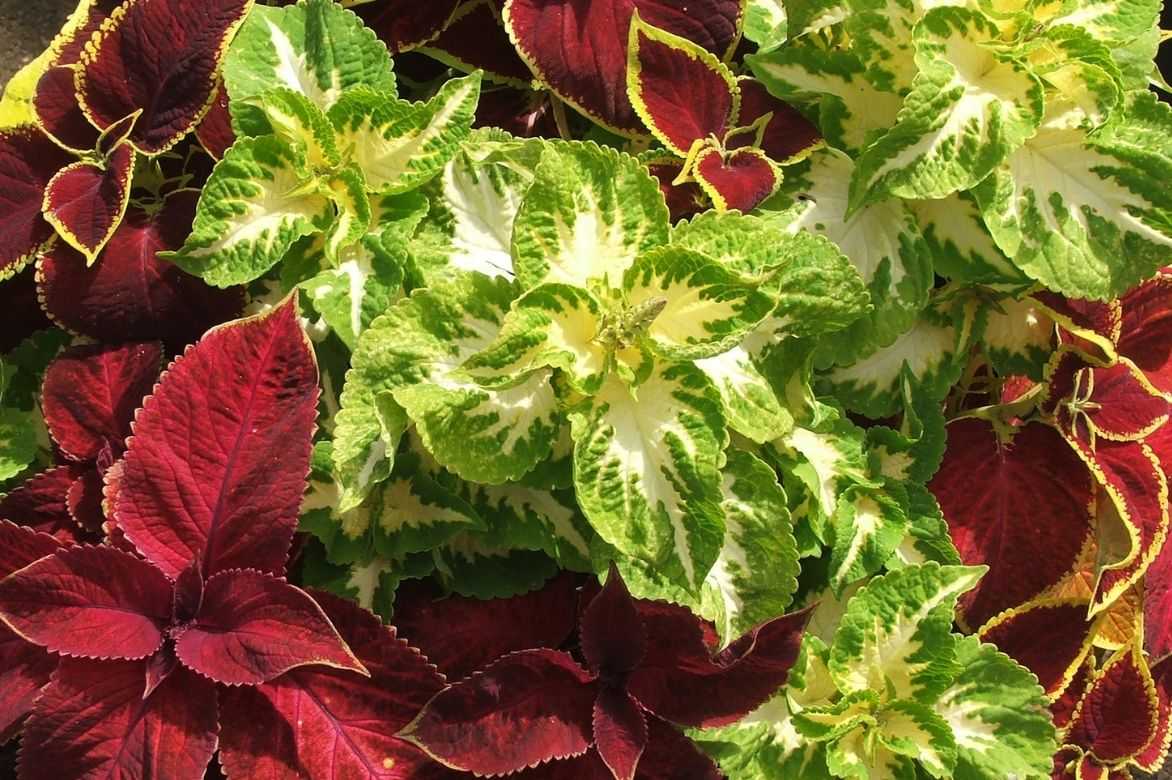
Diseases and potential pests
The Coleus is generally quite resistant to diseases. However, it is vulnerable to slugs which adore its young foliage: follow our advice to combat their attacks!
If you notice the presence of aphids: spray with water mixed with black soap or Marseille soap.
Coleus grown indoors are more vulnerable and often fall prey to:
- mealybugs, identifiable by the cottony, sticky residue they leave on the foliage: remove them with a cotton pad soaked in 90°C alcohol, then spray with rapeseed oil or a 5% black soap solution. Repeat regularly until they disappear.
- In a hot and overly dry atmosphere, red spider mites may develop, leaving marks on the foliage: immediately cut away heavily infested parts and regularly mist the foliage with non-calcareous water to maintain constant humidity around the pot. Spray with nettle macerations.
- Whiteflies are common for many indoor plants: they weaken the coleus in case of infestation: spray the leaves with soapy water, optionally mixed with a little vegetable oil.
Learn more in our article: Coleus Indoors: Preventing and Treating Diseases and Parasites.
Propagation: Taking Cuttings from Coleus
Coleus is a tender perennial that benefits from being propagated by cuttings in spring or summer. Sowing is also possible in spring in warm conditions, as you can read in our section “when and how to sow coleus seeds”.
How to take coleus cuttings?
Take them in spring or June from non-flowering stems.
- Take 10-15 cm long stem cuttings
- Remove the lower leaves and keep the upper ones
- Place these cuttings in a glass of water or in buckets filled with moist compost
- When roots develop after 2-3 weeks, transplant into 10-12 cm pots with a mix of soil, compost and sand
- Keep frost-free in light at 15°C, watering regularly until the following spring
- Pinch back the young plants during winter
- The following spring, plant the cuttings outdoors or in pots in May after the last frost
Pairing Coleus
The Coleus is an essential plant for all colourful gardens, and even for shady gardens where its fascinating foliage brightens up cooler areas. It is perfect for creating colourful focal points, stunning velvety clumps and subtle texture combinations.
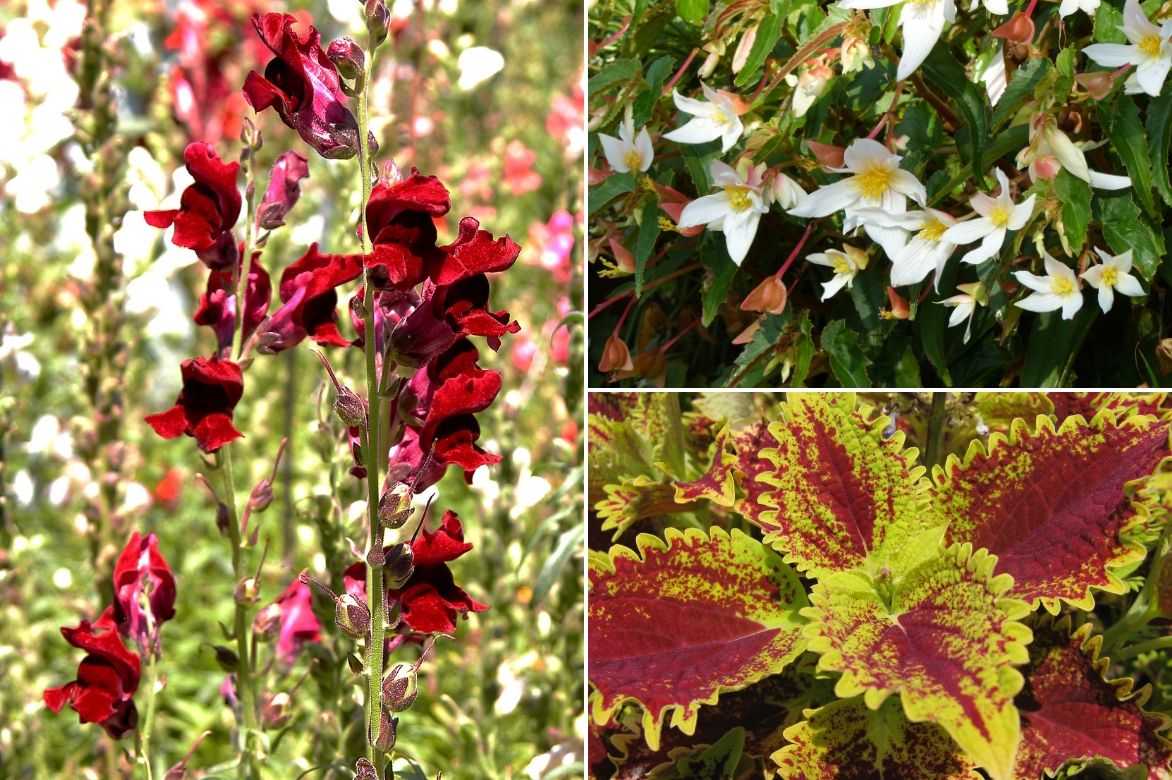

A pot combination idea: Antirrhinum majus ‘Black Prince’, Begonia Summerwings ‘White Elegance’ and Coleus ‘Skyfire’
With its endlessly variable hues and fairly bushy habit, it adapts to all desires and can be used either as a standalone feature or in small groups. It creates beautiful displays throughout the growing season without relying on additional flowering plants.
For a strong visual impact, also contrast colours with subtle touches. Cultivars with absinthe-green leaves margined in cream will thrive at the base of a golden Bleeding Heart or Dicentra spectabilis Goldheart®, alongside euphorbias, a Geum ‘Eos’, or the acid-toned foliage of Heuchera ‘Lime Rickey’, in refreshing green gradients.
In red/black variations, black-leaved coleus varieties will complement plants with deep purple-black foliage, such as certain perennial geraniums, heucheras, morning glories, or lobelias.
For a graphic effect, create a contrast between the opulent foliage of coleus and the slender, sharp leaves of phormiums, the tousled look of carex, or the dense, gracefully arching Uncinia rubra.
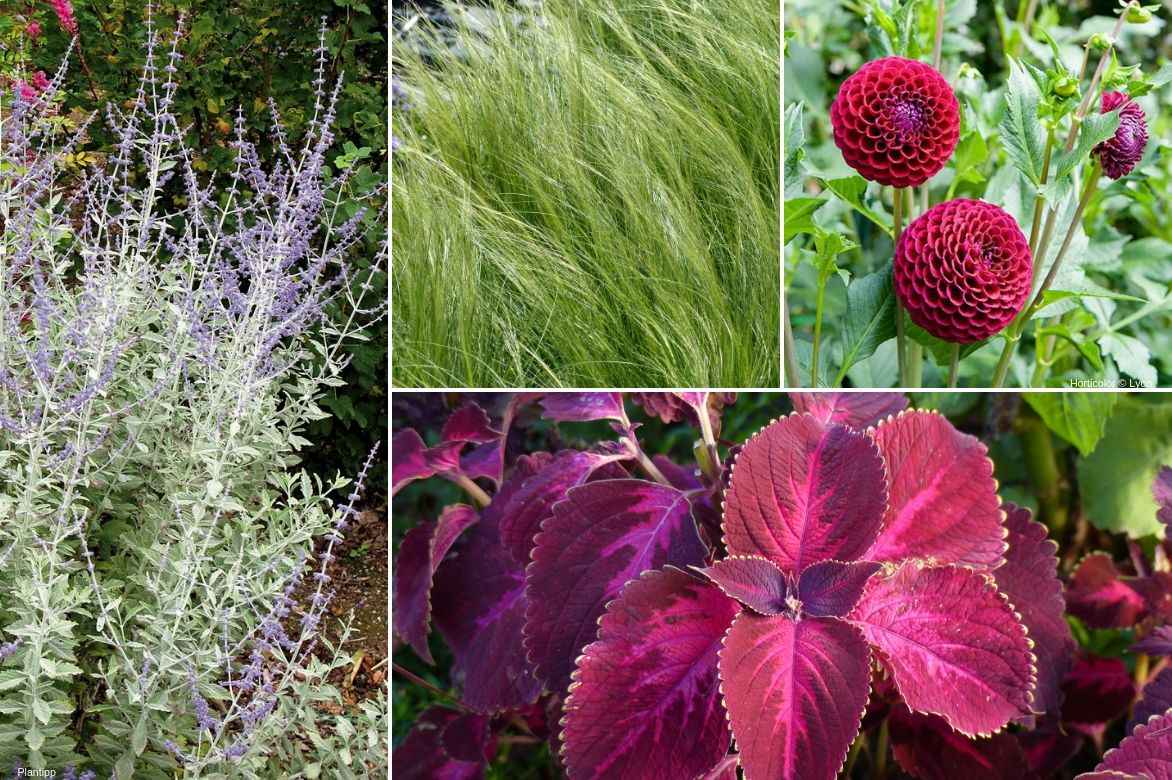

A border combination idea: Perovskia such as ‘Little Spire’, Stipa tenuifolia, Pompon Dahlia ‘Ivanetti’ and Coleus ‘Kingwood of Torch’ or a darker variety like ‘Black Prince’ would also work well
It will elegantly fringe the edge of a lush summer border alongside a mix of annual flowers such as love-in-a-mist, cosmos, Linum grandiflorum ‘Rubrum’, or summer-flowering perennials like larkspur or lupins.
In a highly colourful flowerbed, pair it with the velvety blooms of Calibrachoa, Convolvulus sabatius, or ornamental-leaf sweet potato vines like the ‘Sweet Caroline‘ variety.
In bold compositions with warm tones, it will mingle with coneflowers, zinnias, tricolour amaranth ‘Garden Select’, fuchsias, and tall cannas.
Black varieties like ‘Black Prince’ add whimsy to a black and white garden, pairing elegantly in chic arrangements with black flowers such as Iris ‘Black Knight’, black arums, Alcea rosea ‘Nigra’, white foxgloves, purple-leaved perennial geraniums, or Ophiopogon ‘Hosoba Kokuryu’, set against a backdrop of Arundo donax ‘Variegata Versicolor’ and Acorus gramineus ‘Variegatus’.
Its vibrant personality also shines among ornamental grasses like Pennisetum and Miscanthus, which it livens up.
It adds a graphic foliage note to planters and hanging baskets when mixed with impatiens, begonias, ornamental tobacco, or diascas.
Its warm-toned leaves (Coleus ‘Rainbow’) harmonise beautifully with shrubs known for autumn colour such as maples, barberries, and deciduous euonymus.
Useful resources
- Coleus: how to grow and care for it indoors
- Discover our tutorial: how to sow coleus?
- The most beautiful annual plants are in our nursery!
- Follow all our advice for properly planting annuals
- Discover our collection of annual flowers as plug plants!
- Subscribe!
- Contents
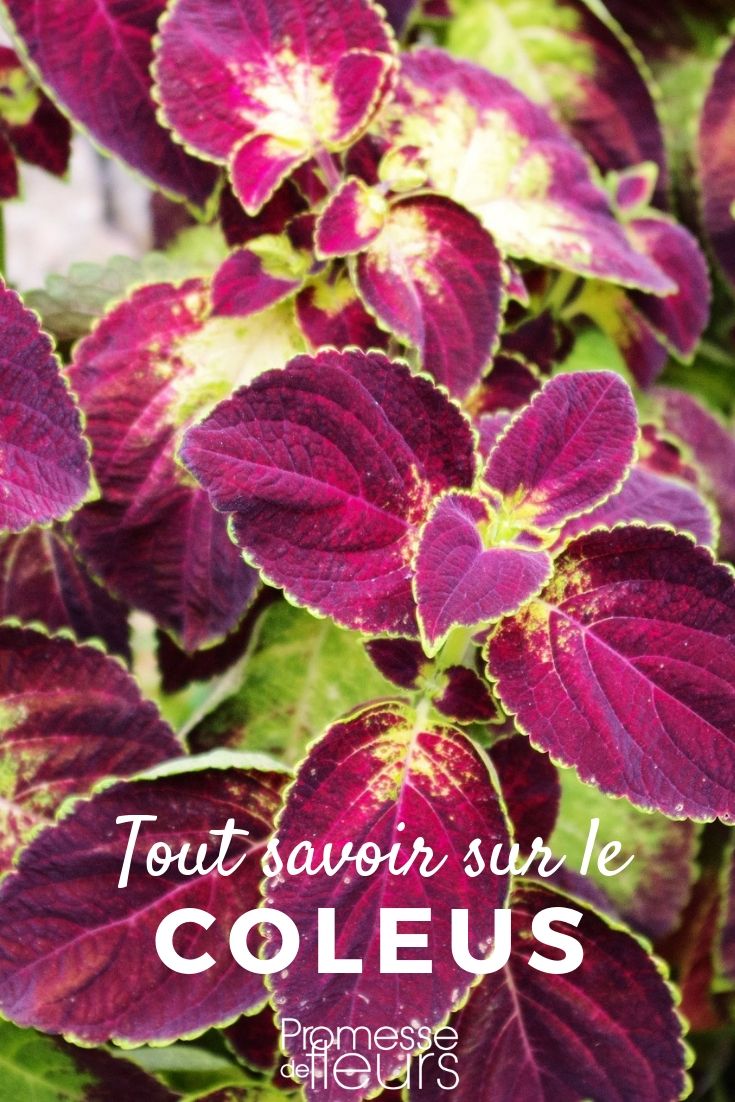

































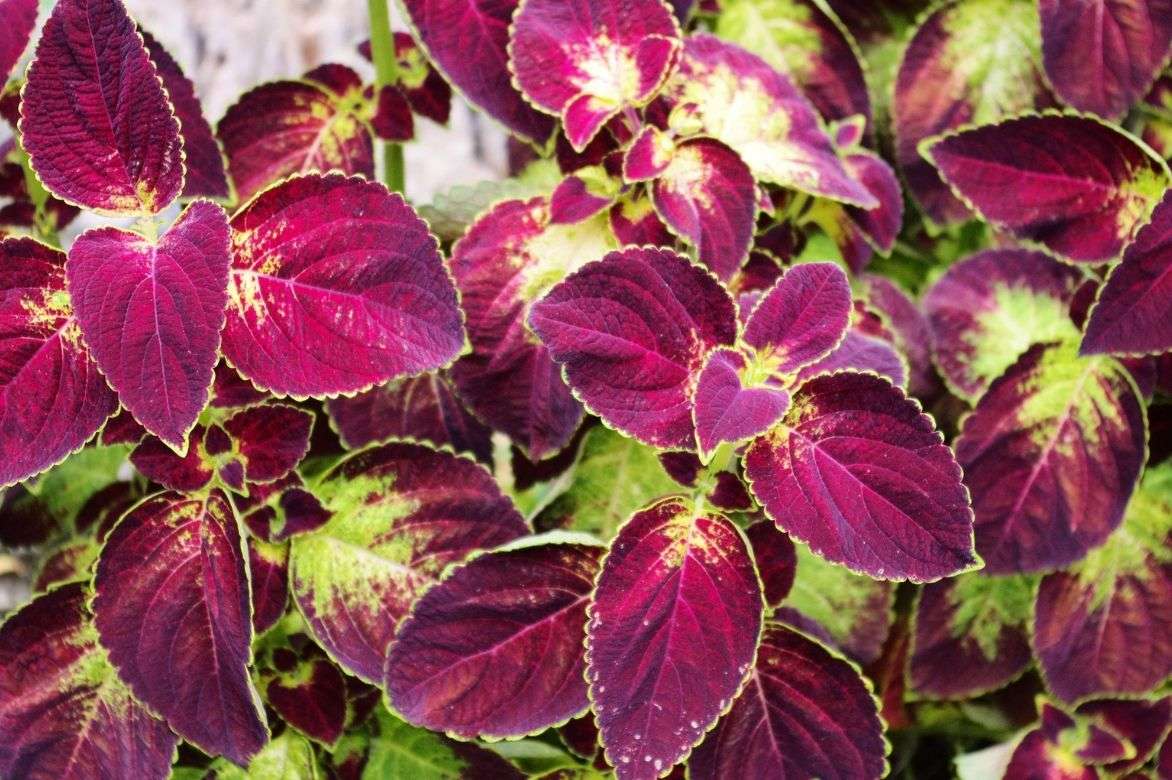


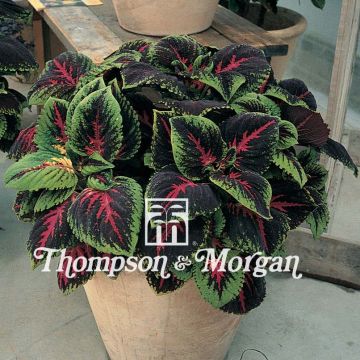

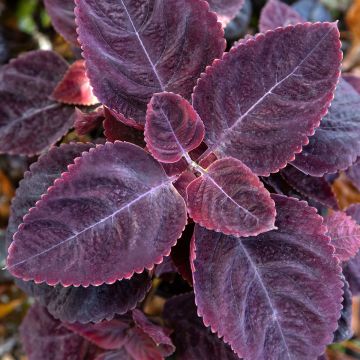



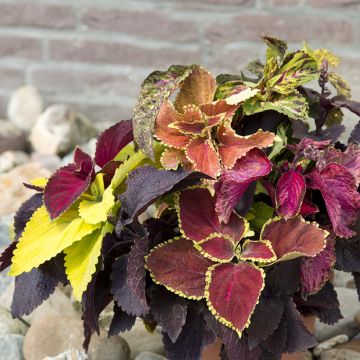
Comments